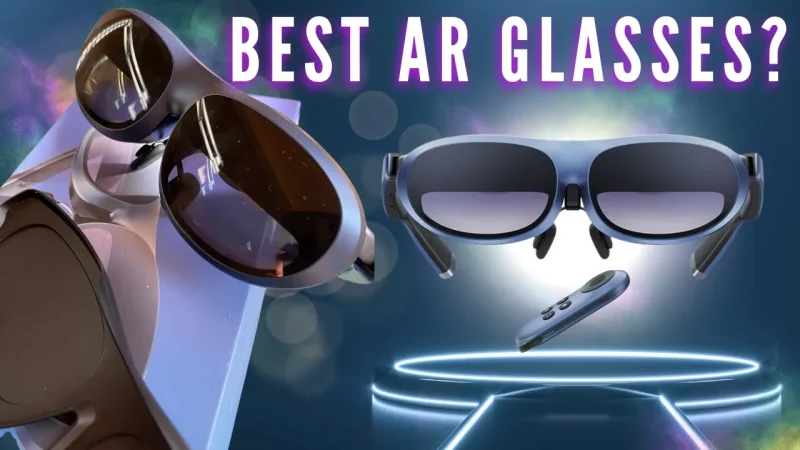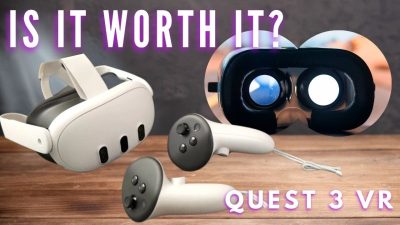📢 Disclosure: Some links on this page are affiliate links. As an Amazon Associate, I earn from qualifying purchases at no extra cost to you. Thanks for your support.
Meta Quest 3 vs Quest 2, what’s the difference?
With VR technology evolving rapidly, the Meta Quest series has continued to redefine immersive gaming and mixed reality experiences. If you’re considering purchasing a Quest headset, it’s important to weigh the differences between the Quest 2 and Quest 3 to determine which one best suits your needs. The Quest 3S is now also in the mix, which brings even more options to the table.
In this article, we’ll break down key specs, performance, design, and features to help you make an informed decision.
- Processor & Memory: Snapdragon XR2 Gen 2 + improved 8 GB RAM
- Better Display: 2064×2208 per eye LCD, 90–120 Hz, pancake lenses
- Tracking: 6DoF inside-out with 2 RGB + 4 IR cameras
- Audio/Input: Spatial audio, mic, Touch Plus controllers with haptics, hand tracking
- Connectivity: Wi-Fi 6E, Bluetooth 5.2, USB-C; Slightly heavier at around 515 grams
- Processor & Memory: Older Snapdragon XR2 + 6 GB RAM
- Display: 1832×1920 per eye LCD, up to 90 Hz (120 Hz experimental)
- Tracking: 6DoF inside-out with 4 IR cameras
- Audio/Input: 3D spatial audio, built-in mic, Touch controllers + hand tracking
- Connectivity: Wi-Fi 6, Bluetooth 5, USB-C; weights just over 500 grams
- Display & Audio: Immersive graphics with 3D positional audio, hand tracking, and easy-to-use controllers
Quest 2 vs Quest 3 comparison
| Feature | Meta Quest 2 | Meta Quest 3 |
|---|---|---|
| Processor | Snapdragon XR2 Gen 1 | Snapdragon XR2 Gen 2 (2x faster) |
| RAM | 6GB | 8GB |
| Storage Options | 128GB / 256GB | 128GB / 512GB |
| Battery Life | ~3 hours | ~2-3 hours |
| Passthrough | Monochrome | Full-color mixed reality |
| Display | LCD (1832×1920 per eye) | OLED (2064×2208 per eye) |
| Field of View | 97° horizontal | 110° horizontal |
| Audio | Standard speakers | Enhanced stereo sound |
| Controllers | Tracking ring design | TruTouch haptics, no tracking rings |
| Price | Lower, often on discount | Higher, but offers more features |
Quest 2 vs Quest 3 processing power & performance
The Meta Quest 3 comes with the Snapdragon XR2 Gen 2, which more than doubles the graphical power compared to the Snapdragon XR2 Gen 1 in the Quest 2. This means:
- Faster loading times
- Smoother performance
- More support for high-end, graphically demanding games
However, since most apps on the Quest Store were built with the Quest 2 in mind, you may not immediately see the need for extra power—unless you plan on playing newer, more demanding titles like Asgard’s Wrath 2 or VR modded PC games.
If you’re looking for future-proofing, the Quest 3 is the better choice. But if you just want to play existing games, the Quest 2 still performs well.
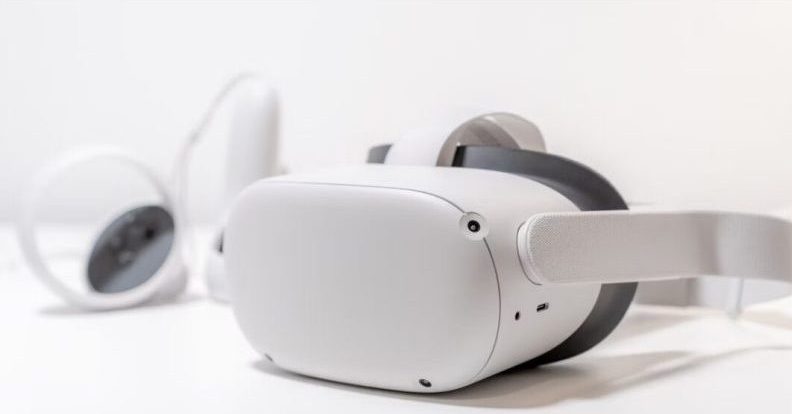
Quest 2 vs Quest 3 storage & RAM
Both headsets start at 128GB of storage, but the Quest 3 offers a 512GB option, whereas the Quest 2 maxes out at 256GB. The Quest 3’s 8GB of RAM also provides better multitasking compared to 6GB on the Quest 2. This means:
- Faster switching between apps
- Better performance in demanding VR experiences
- Improved multitasking for productivity apps like Immersed
Quest 2 vs Quest 3 battery life: A step back?
One surprising downside of the Quest 3 is its battery life.
While both devices are rated for 2-3 hours of usage, many users report that the Quest 2 lasts longer on average, especially for less demanding applications like YouTube VR or web browsing. However, if battery life is a concern, you can:
- Use a head strap with a built-in battery (like the Meta Elite Strap).
- Adjust brightness and refresh rate to extend playtime.
- Enable power-saving mode to conserve battery during extended use.
For VR gamers who don’t want interruptions, a battery pack strap is a must-have accessory for either headset.
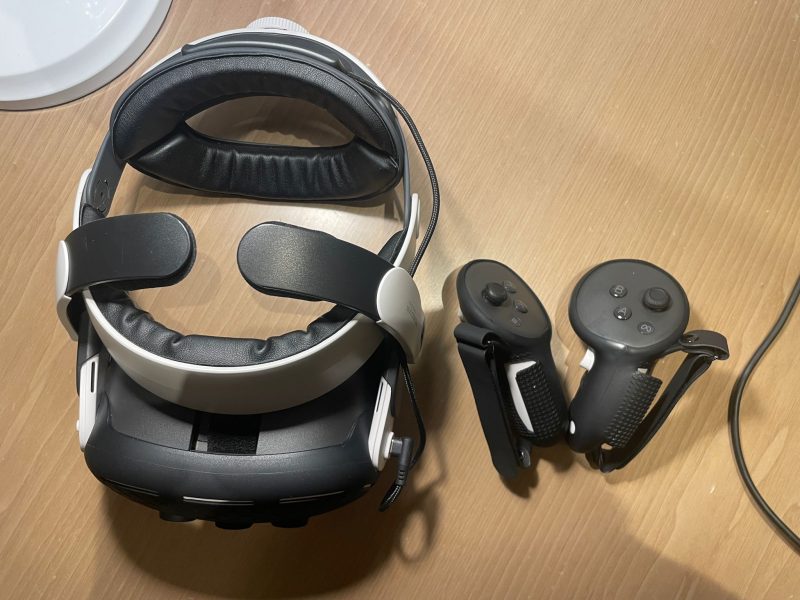
Quest 2 vs Quest 3 display & passthrough: A major upgrade on the Quest 3
The Quest 3 has a 30% higher pixel density, reducing the screen door effect and making text and fine details much sharper, resulting in overall better resolution.
Full-Color Passthrough is unlike the monochrome passthrough on the Quest 2, the Quest 3’s mixed reality mode allows users to see the real world in full color while still interacting with VR elements. This makes mixed reality applications much more enjoyable and practical, giving users the ability to:
- Use real-world apps with virtual screens (like VR workstations).
- Interact with the environment without needing to remove the headset.
- Play MR-compatible games that blend reality and virtual elements.
If mixed reality interests you, the Quest 3 is the better choice.
Quest 2 vs Quest 3 comfort & design: Is the Quest 3 really more comfortable?
The slimmer design helps with comfort and ergonomics. The Quest 3 is 40% slimmer than the Quest 2, making it feel more balanced on your face. It also has a more Adjustable IPD (Interpupillary Distance). Giving the Quest 3 a wheel-based IPD adjustment for a better fit. The new Y-shaped spacer also helps distribute weight more evenly, making it more comfortable. But still, some users find the Quest 3’s standard strap uncomfortable, especially during fast movements.
If comfort is a concern, you may want to swap out the stock head strap for a more ergonomic option. The Quest 2 is only slightly lighter, and its bulkier design makes it feel more front-heavy.
Quest 2 vs Quest 3 audio: The Quest 3 is surprisingly good

- Louder stereo speakers with a wider sound range.
- More immersive audio with better spatial awareness.
- 3.5mm headphone jack included for external audio options.
The Quest 3’s upgraded speakers make a noticeable difference, giving richer, clearer sound with less noise leakage compared to the Quest 2.
Quest 2 vs Quest 3 controllers: A small but effective upgrade
The Quest 3’s controllers feature TruTouch haptics, which provide a more immersive feel when interacting with objects.
The tracking ring is removed, making the controllers sleeker and more compact.
Improved ergonomic grip, though fast-motion tracking accuracy could still be better.
If you play a lot of fast-paced games like Beat Saber, the Quest 3 controllers offer better feedback and comfort.
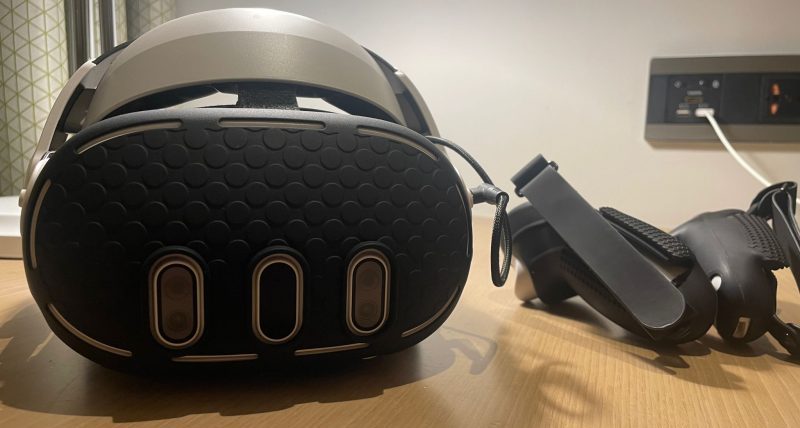
Backward compatibility: Can the Quest 3 Play Quest 2 Games?
Yes! The Quest 3 supports all Quest 2 games and apps. However, not all games are fully optimized for the Quest 3’s higher processing power. Some older titles might have visual stuttering until they get updated. If you already own a Quest 2 library, upgrading to the Quest 3 means you won’t lose access to any content.
What About the Quest 3S?
The quest 3s has been out around enough time now for us to add it into the mix. A lot of people want to know if this is the better option, while that does depend on your needs, I can share some details and facts about the quest 3s to help you decide if it’s right for you. While it’s newer than the quest 3, it’s not necessarily ‘better’. You’re buying hardware that is a bit of a downgrade from the quest 3 but where you’re saving is mainly in price. The Meta Quest 3s is priced very reasonably, cheaper than the quest 3, which is probably the main selling point. You’re getting somewhat of a middle-ground between the oculus quest 2 and meta quest 3. The pancake lenses are what make the difference with the Meta Quest 3 which the quest 2 and 3s lack, making them both cheaper.
A new Quest model has been released recently in October 2024. It may have less features when compared to the Quest 3 like less sharp displays but it is more affordable. If you don’t care too much about pancake lenses, the Quest 3s runs the same games and as it’s the newer model, it should continue to recieve updates for some time.
Overall: Which one should you get?
- Display: It has a sharp, high-resolution display with pancake lenses, that give clearer visuals.
- Processor: The Meta Quest 3 is powered by the Snapdragon XR2 Gen 2 with 8 GB RAM, it runs apps and games smoothly with console-like graphics.
- Cameras: The full-color passthrough unlocks true mixed reality, letting you blend digital objects into your real space.
- Controllers: Touch Plus controllers bring TruTouch haptic feedback, this helps to add realistic sensations when you interact although I prefer using them with a case for better grip.
- System: The Quest 3 runs on Meta Horizon OS, so you get multitasking windows, app integration, and all Quest content in one ecosystem, it still feels like the best VR OS I've used to far.
Choose the Quest 3 if…
- You want the latest technology and future-proofing.
- You’re interested in mixed reality and full-color passthrough.
- You value a sharper display and improved audio.
If you’d like to learn more about the Quest 3 and its features, our guide breaks down this headset with an in-depth Meta Quest 3 Overview.
Choose the Quest 2 if…
- You want a more budget-friendly VR experience.
- You’re okay with slightly lower performance.
- You don’t mind monochrome passthrough and a bulkier design.
Go for the Quest 3 Lite if…
- You’re looking for a cheaper option with some Quest 3 features.
- You prioritize comfort over performance.
Check out the Oculus Quest 2 vs Meta Quest 3 video below:
Thanks for reading! If you want to know more about the meta quest 3, read our meta quest 3 review here. We hope this article helped you. Check out our other related articles on the links below.


